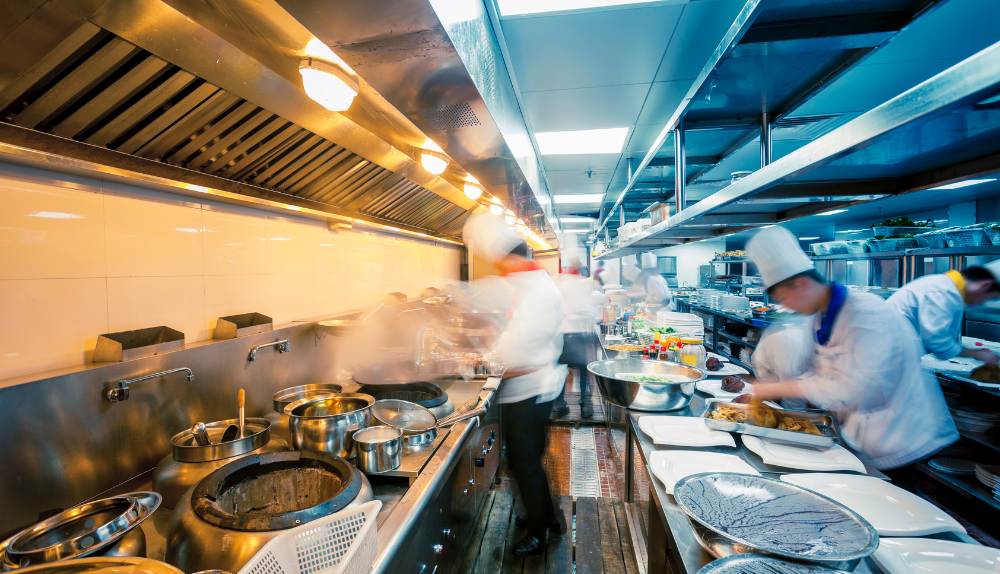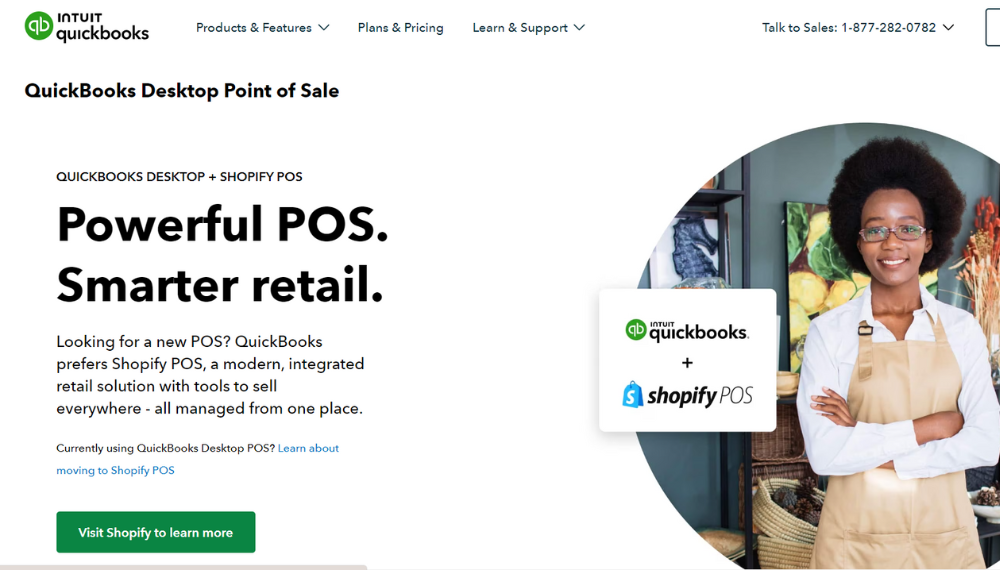In the ever-changing landscape of the restaurant industry, where economic downturns can present significant challenges, it takes true resilience and strategic thinking to thrive. As the winds of a slow economy blow, many restaurateurs find themselves grappling with dwindling customer numbers and shrinking profit margins. Let's dive in and discover how to grow your restaurant in a slow economy. How you can change challenges into triumphs and transform your restaurant into a beacon of prosperity, no matter the economic climate.
However, amidst the storm, there lies an opportunity to not only weather the tempest but to emerge stronger than ever. In this guide, we will explore the secrets to growing your restaurant in a slow economy, unveiling a treasure trove of innovative strategies and actionable insights. So, fasten your aprons and prepare to embark on a culinary adventure that will empower you to steer your restaurant towards success, even when the economic tides seem against you.
Growth Tips for a Restaurant in a Slowing Economy

In challenging economic times, the restaurant industry can face significant headwinds as consumers tighten their belts and discretionary spending decreases. However, with the right strategies and a proactive approach, restaurant owners can not only survive but also thrive in a slowing economy. This section aims to provide valuable growth tips to help restaurateurs navigate through difficult times and come out stronger on the other side. Here are some valuable tips:
Diversify Your Menu and Target New Markets
When faced with a slowing economy, it is essential to adapt and cater to changing consumer preferences. One effective strategy is to diversify your menu offerings to appeal to a broader range of customers. Consider introducing new dishes or exploring alternative cuisines that may attract a different clientele. Additionally, consider catering to dietary restrictions or preferences, such as gluten-free or vegan options, to tap into niche markets.
Enhance the Customer Experience
In a slowing economy, providing an exceptional customer experience becomes crucial for retaining existing patrons and attracting new ones. Pay attention to the small details that make a significant impact, such as personalized service, attentive staff, and a warm, welcoming ambiance. Implement loyalty programs, offer special promotions, or organize events to incentivize repeat visits. Engage with customers through social media platforms and online reviews, actively seeking feedback and responding promptly to any concerns or suggestions.
Optimize Operations and Control Costs
Efficiency and cost control are paramount during a slowing economy. Review your operations and identify areas where you can optimize processes and reduce expenses. Streamline inventory management, minimize waste, and negotiate better deals with suppliers. Analyze your menu profitability and consider eliminating or modifying dishes that have low margins or are not popular. Moreover, cross-train your staff to handle multiple roles, reducing the need for excessive staffing.
Embrace Technology
Leveraging technology can provide a competitive edge and drive growth, even in a slowing economy. Consider implementing online ordering systems, mobile apps, or third-party delivery services to expand your reach and cater to customers who prefer dining at home. Invest in a
robust POS (point of sale) system that can help with inventory management, sales tracking, and customer analytics. Additionally, utilize social media platforms and online marketing strategies to increase brand awareness and attract a wider customer base.
Collaborate with Local Businesses and Events
Building partnerships with other local businesses or participating in community events can significantly boost your restaurant's visibility and attract new customers. Consider hosting special events, such as food festivals or collaborations with nearby establishments. Sponsor local sports teams or cultural events to create a positive association with your restaurant in the minds of potential customers. By becoming an active participant in the local community, you can strengthen your brand presence and foster customer loyalty.
Emphasize Value and Promotions
During a slowing economy, consumers are more inclined to seek value for their money. Emphasize value-driven propositions, such as affordable meal bundles, happy hour specials, or loyalty discounts. Offer limited-time promotions or introduce a loyalty program that rewards frequent visits or referrals. Communicate these promotions effectively through various channels, including your website, social media platforms, and in-store signage, to create a sense of urgency and encourage customer engagement.
Although a slowing economy may present challenges to the restaurant industry, it also offers opportunities for growth and innovation. By diversifying your menu, enhancing the customer experience, optimizing operations, embracing technology, collaborating with local businesses, and emphasizing value-driven promotions, you can position your restaurant for success in difficult times. Remember to stay adaptable, closely monitor market trends, and continuously seek feedback from your customers. By implementing these growth tips and maintaining a forward-thinking mindset, you can not only weather the economic storm but also thrive and position your restaurant for long-term success.
How Can Technology Thrive in a Slowing Economy?

In a slowing economy, businesses face the challenge of staying competitive and finding ways to thrive despite reduced consumer spending. One powerful tool that can aid businesses in this endeavor is technology. By harnessing the capabilities of technology, businesses can optimize their operations, reach a wider customer base, and streamline processes, ultimately enabling them to weather the economic storm more effectively. Here are several ways in which technology can help your business thrive in a slowing economy:
Online Presence and E-commerce
Establishing a strong online presence is crucial in today's digital age. A well-designed website and an engaging social media presence can significantly expand your reach and attract customers who prefer to shop or engage with businesses online. Implementing e-commerce capabilities allows customers to make purchases directly from your website, providing convenience and accessibility. This is especially valuable during a slowing economy when foot traffic may decrease, and online sales can help compensate for the decline.
Data Analytics
Technology enables businesses to collect and analyze vast amounts of data, providing valuable insights into customer behavior, preferences, and market trends. By leveraging data analytics tools, businesses can make informed decisions about product offerings, marketing strategies, and pricing structures. These insights can help optimize operations, identify cost-saving opportunities, and develop targeted marketing campaigns to maximize returns on investment.
Streamlined Operations
Technology can automate and streamline various business operations, saving time, reducing errors, and increasing efficiency. For example, implementing a robust point-of-sale (POS) system simplifies the sales process, tracks inventory, and generates comprehensive reports. Inventory management software can help optimize stock levels, reduce waste, and ensure timely restocking. Automated scheduling tools facilitate efficient staff management, ensuring adequate coverage while minimizing labor costs.
Online Marketing and Advertising
Traditional forms of advertising can be expensive and may not yield the desired results in a slowing economy. Digital marketing, on the other hand, offers cost-effective strategies to reach and engage with potential customers. Pay-per-click advertising, search engine optimization (
SEO), and targeted social media advertising allow businesses to reach their target audience precisely, increasing the chances of conversion. Additionally, email marketing campaigns and personalized marketing automation can nurture customer relationships and encourage repeat business.
Remote Work and Collaboration
Technology enables businesses to embrace remote work and collaboration, which can reduce overhead costs and enhance productivity. Cloud-based collaboration tools facilitate seamless communication and document sharing among team members, regardless of their physical location. Remote work arrangements can also attract top talent from a wider geographic area, increasing the potential for innovation and growth.
Customer Relationship Management (CRM) Systems
Businesses may track prospects, manage customer interactions, and develop connections with the help of a CRM system. Businesses can personalize their communication and adapt their offers to different client preferences by centralizing customer data and presenting a comprehensive perspective of customer interactions. This individualized method improves client pleasure, fosters loyalty, and promotes repeat business.
Customer Service and Support
Technology offers numerous channels for businesses to provide efficient and prompt customer service. Chatbots and AI-powered virtual assistants can handle common inquiries and provide support, freeing up staff to focus on more complex issues. Social media platforms and online review platforms allow businesses to promptly address customer feedback and resolve issues publicly, demonstrating their commitment to customer satisfaction.
How To Grow Your Restaurant In A Slow Economy - Best Practices
Growing a restaurant business in 2023 requires a combination of innovation, adaptability, and a deep understanding of customer needs. Here are some best practices to help you achieve growth and success in the ever-evolving restaurant industry:
Embrace Technology
Leverage technology to enhance your operations and customer experience. Implement online ordering systems, mobile apps, and delivery platforms to cater to the increasing demand for convenience. Adopt a robust point-of-sale (POS) system to streamline transactions and gather valuable data. Utilize social media, email marketing, and digital advertising to reach a wider audience and engage with customers.
Prioritize Customer Experience
Offer exceptional customer service to build loyalty and attract repeat business. Train your staff to deliver personalized, attentive service. Create a warm and welcoming ambiance, paying attention to every detail from decor to lighting. Actively seek feedback and respond to customer reviews and concerns to improve the dining experience continuously.
Emphasize Sustainability
Incorporate sustainable practices into your operations to appeal to environmentally conscious consumers. Use locally sourced ingredients, reduce food waste, and implement recycling and energy-saving initiatives. Communicate your commitment to sustainability to resonate with customers who prioritize ethical and eco-friendly choices.
Engage in Online Marketing
Develop a strong online presence through a well-designed website, active social media accounts, and positive online reviews. Regularly post engaging content, such as behind-the-scenes videos, chef interviews, or interactive polls, to create a sense of connection and foster customer engagement. Use search engine optimization (SEO) techniques to ensure your restaurant ranks well in online searches.
Implement Loyalty Programs
Encourage customer loyalty by implementing a rewards program that offers incentives for repeat visits and referrals. Provide exclusive discounts, special offers, or personalized recommendations to reward loyal customers and make them feel appreciated.
Build a Strong Team
Invest in hiring and retaining talented staff who share your passion for hospitality. Provide ongoing training and professional development opportunities to foster a knowledgeable and skilled team. Empower your employees to take ownership and contribute innovative ideas to enhance operations and customer satisfaction.
Final Words
In conclusion, navigating a slowing economy and achieving growth in the restaurant industry requires a proactive and strategic approach. By implementing the best practices discussed in this chat, including embracing technology, prioritizing customer experience, emphasizing sustainability, innovating menus, collaborating with local partners, engaging in online marketing, implementing loyalty programs, monitoring trends, building a strong team, and gathering and analyzing data, restaurant owners can position their businesses for success in 2023.
Adapting to changing consumer preferences, leveraging technology, and fostering strong relationships with customers and the community are key to thriving in a competitive landscape. With dedication, innovation, and a commitment to excellence, restaurants can not only weather economic challenges but also emerge stronger, capturing new opportunities and delighting diners with memorable experiences.
Frequently Asked Questions (FAQs)
How can technology help my restaurant grow in a slowing economy?
Technology can help your restaurant grow by enhancing operational efficiency, expanding your reach through online ordering and delivery services, and improving customer engagement through social media and digital marketing strategies.
What steps can I take to improve the customer experience in my restaurant?
To improve the customer experience, focus on delivering personalized service, creating a welcoming ambiance, and actively seeking and responding to customer feedback. Train your staff to provide exceptional service and prioritize customer satisfaction at every touchpoint.
How can I make my restaurant more sustainable?
You can make your restaurant more sustainable by sourcing locally produced ingredients, implementing recycling and energy-saving practices, reducing food waste, and communicating your commitment to sustainability to customers.
What are some effective ways to promote my restaurant online?
Promote your restaurant online by developing a well-designed website, maintaining an active presence on social media platforms, leveraging online reviews and ratings, and implementing digital marketing strategies such as search engine optimization (SEO) and targeted advertising.
What are some key metrics I should track to monitor the growth of my restaurant?
Key metrics to track include sales revenue, average check size, customer retention rate, customer satisfaction scores, food and labor costs, and profitability. These metrics can provide insights into the financial health and performance of your restaurant.
 In challenging economic times, the restaurant industry can face significant headwinds as consumers tighten their belts and discretionary spending decreases. However, with the right strategies and a proactive approach, restaurant owners can not only survive but also thrive in a slowing economy. This section aims to provide valuable growth tips to help restaurateurs navigate through difficult times and come out stronger on the other side. Here are some valuable tips:
In challenging economic times, the restaurant industry can face significant headwinds as consumers tighten their belts and discretionary spending decreases. However, with the right strategies and a proactive approach, restaurant owners can not only survive but also thrive in a slowing economy. This section aims to provide valuable growth tips to help restaurateurs navigate through difficult times and come out stronger on the other side. Here are some valuable tips:
 In a slowing economy, businesses face the challenge of staying competitive and finding ways to thrive despite reduced consumer spending. One powerful tool that can aid businesses in this endeavor is technology. By harnessing the capabilities of technology, businesses can optimize their operations, reach a wider customer base, and streamline processes, ultimately enabling them to weather the economic storm more effectively. Here are several ways in which technology can help your business thrive in a slowing economy:
In a slowing economy, businesses face the challenge of staying competitive and finding ways to thrive despite reduced consumer spending. One powerful tool that can aid businesses in this endeavor is technology. By harnessing the capabilities of technology, businesses can optimize their operations, reach a wider customer base, and streamline processes, ultimately enabling them to weather the economic storm more effectively. Here are several ways in which technology can help your business thrive in a slowing economy:
 In challenging economic times, the restaurant industry can face significant headwinds as consumers tighten their belts and discretionary spending decreases. However, with the right strategies and a proactive approach, restaurant owners can not only survive but also thrive in a slowing economy. This section aims to provide valuable growth tips to help restaurateurs navigate through difficult times and come out stronger on the other side. Here are some valuable tips:
In challenging economic times, the restaurant industry can face significant headwinds as consumers tighten their belts and discretionary spending decreases. However, with the right strategies and a proactive approach, restaurant owners can not only survive but also thrive in a slowing economy. This section aims to provide valuable growth tips to help restaurateurs navigate through difficult times and come out stronger on the other side. Here are some valuable tips:
 In a slowing economy, businesses face the challenge of staying competitive and finding ways to thrive despite reduced consumer spending. One powerful tool that can aid businesses in this endeavor is technology. By harnessing the capabilities of technology, businesses can optimize their operations, reach a wider customer base, and streamline processes, ultimately enabling them to weather the economic storm more effectively. Here are several ways in which technology can help your business thrive in a slowing economy:
In a slowing economy, businesses face the challenge of staying competitive and finding ways to thrive despite reduced consumer spending. One powerful tool that can aid businesses in this endeavor is technology. By harnessing the capabilities of technology, businesses can optimize their operations, reach a wider customer base, and streamline processes, ultimately enabling them to weather the economic storm more effectively. Here are several ways in which technology can help your business thrive in a slowing economy:





